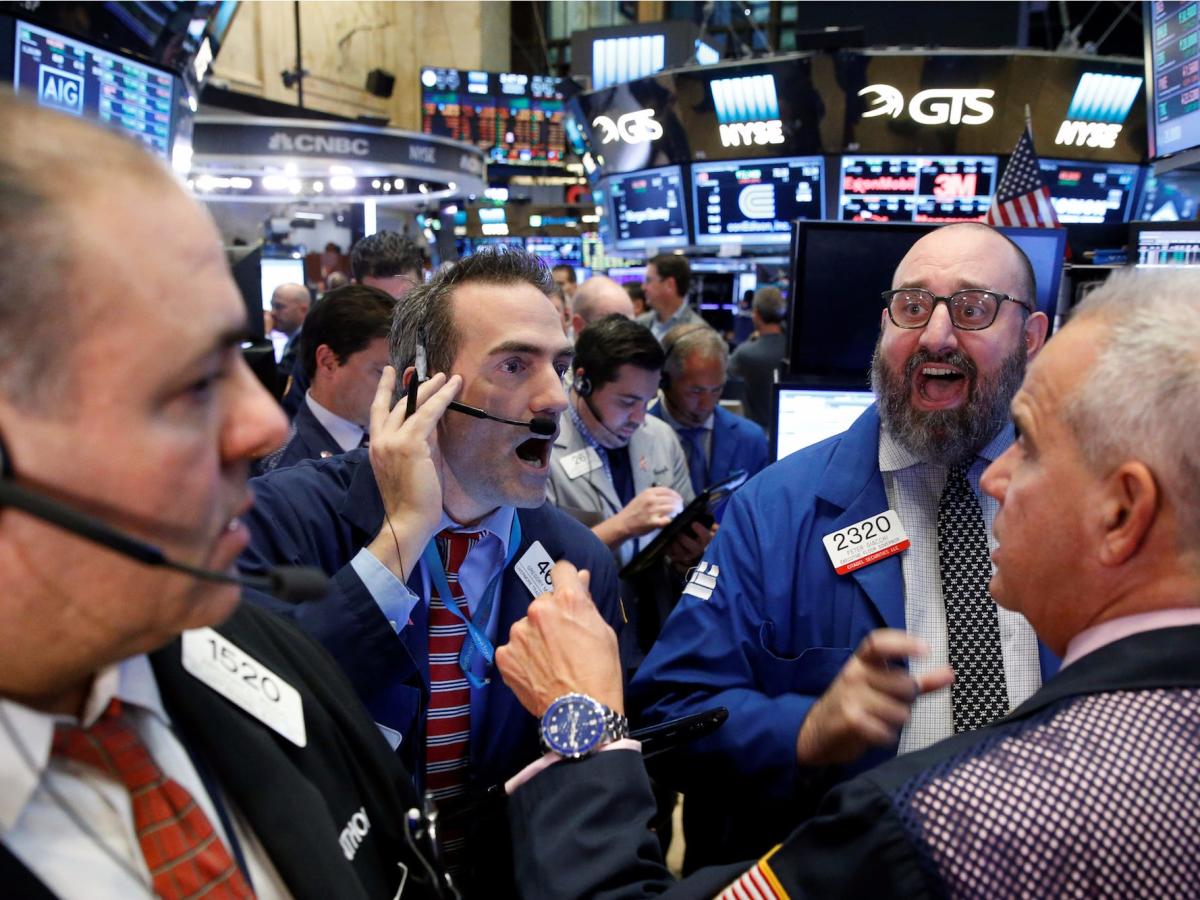Treasury yields reach new decade highs in Asia as traders become concerned about the duration of elevated interest rates, causing a dampening effect on stocks, particularly in China, even as some markets attempt to rebound.
US bond-market selloff continues as resilient economy prompts investors to anticipate elevated interest rates even after the Federal Reserve finishes its hikes, leading to a 16-year high in 10-year yields and increased inflation expectations.
Bond selling has driven 10-year Treasury yields to 16-year highs, possibly due to the timing of the Bank of Japan's signal to allow higher yields and speculation on the upcoming Federal Reserve symposium, with implications for risk appetite and a focus on Fed Chair Jerome Powell's Jackson Hole speech.
Surging U.S. Treasury yields are causing concern among investors as they wonder how much it will impact the rally in stocks and speculative assets, with the S&P 500, technology sector, bitcoin, and high-growth names all experiencing losses; rising rates are making it more difficult for borrowers and increasing the appeal of risk-free Treasury yields.
The Chinese bond market is experiencing a significant shift due to concerns over China's economic growth prospects, including a bursting property bubble and lack of government stimulus, leading to potential capital flight and pressure on the yuan, which could result in increased selling of US Treasuries by Chinese banks and a rethink of global growth expectations.
The recent spike in U.S. bond yields is not driven by inflation expectations but by economic resilience and high bond supply, according to bond fund managers, with factors such as the Bank of Japan allowing yields to rise and an increase in the supply of U.S. government bonds playing a larger role.
The recent sell-off in US bonds has led to a rise in the yield-to-duration ratio, indicating that yields would need to increase significantly to generate losses, providing a potential floor for the struggling market.
Investors should consider moving into longer-dated bonds as historical data shows that the broader U.S. bond market typically outperforms short-term Treasurys at the end of Federal Reserve rate hiking cycles, according to Saira Malik, chief investment officer at Nuveen.
Despite the appearance of a "Goldilocks" economy, with falling inflation and strong economic growth, rising yields on American government bonds are posing a threat to financial stability, particularly in the commercial property market, where owners may face financial distress due to a combination of rising interest rates and remote work practices. This situation could also impact other sectors and lenders exposed to commercial real estate.
The 10-year Treasury bond is on course for a third consecutive year of losses, which is unprecedented in 250 years of U.S. history, as the bond's return stands at negative 0.3% so far in 2023 after significant declines in the past two years, due to factors such as rising inflation and interest rate hikes by the Federal Reserve.
Treasury yields are on the move and investors should pay attention to where they might be headed next.
Analysts at BMO and UBS predict that the yield on the 10-year Treasury will surpass the S&P 500 earnings yield, indicating a potential fall in stocks and a rise in bond prices.
A surge in bond issuance by U.S. investment-grade-rated companies is putting pressure on long-end U.S. Treasuries as investors opt for higher-yielding corporate debt over government bonds.
The yield on the 10-year Treasury note is predicted to decrease significantly for the remainder of this year and in 2024, as economists anticipate the Federal Reserve to loosen its monetary policy and inflation to fall.
Bond traders are anticipating that the Federal Reserve will continue with interest-rate hikes, and next week's consumer-price index report will provide further insight on how much more tightening may be required to control inflation.
Investors are growing increasingly concerned about the ballooning U.S. federal deficit and its potential impact on the bond market's ability to finance the shortfall at current interest rates, according to Yardeni Research.
The bond market's 10-year and 3-month yield curve has been inverted for a record-breaking 212 straight trading days, indicating the possibility of an upcoming economic recession despite economists' lowered expectations; however, the inversion's uniqueness, driven by the Federal Reserve's focus on combating inflation during a period of strong economic growth, leaves open the question of whether this inversion will fail to predict a recession, particularly if the Fed is able to declare victory on inflation and cut interest rates to above the neutral rate of around 2.5%.
Global equities slide and the 10-year Treasury yield remains near a 16-year high as rising concerns about the Federal Reserve's interest rate policy and other headwinds weigh on the US consumer and economy.
The Federal Reserve's continued message of higher interest rates is expected to impact Treasury yields and the U.S. dollar, with the 10-year Treasury yield predicted to experience a slight increase and the U.S. dollar expected to edge higher.
Treasury yields rise and stocks fall as traders anticipate longer-lasting higher rates to prevent inflation, while Brent oil briefly surpasses $95 a barrel; the Federal Reserve's decision on interest rates is eagerly awaited by investors.
U.S. Treasury yields dip slightly as investors await the Federal Reserve's interest rate decision and guidance, while the 10-year yield remains near 16-year highs.
High-yield bonds outperforming relative to corporate bonds suggests a risk-on environment for stocks, according to a bullish signal in the bond market.
The 10-year Treasury yield reaches its highest level since November 2007 as investors anticipate the Federal Reserve's rate announcement, despite expectations that the Fed will maintain its current rate target.
Despite the recent increase in bond yields, investors are advised to continue buying Treasury yields as they are expected to rise further in the coming months.
U.S. households now hold more Treasury securities than at any point in the past 25 years, as the rise in U.S. yields makes them attractive to investors.
